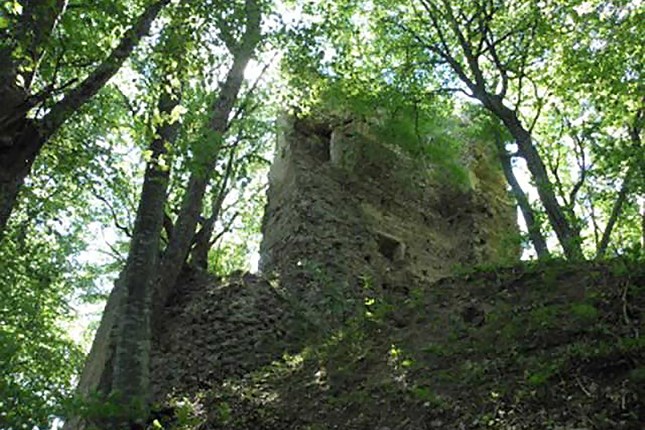Čaklovac
Čaklovačka gradina is located on a steep hill on the northern slopes of Psunj, and south of the Pakrac-Požega road, close to Dragović village. This town had an important strategic position in the Middle Ages because the path from Kamengrad and Požega in the direction of Pakrac was passing right next to it. The fort was built in the 13th century on the property of St. John of Jerusalem (Sv. Ivan Jeruzalemski). It was mentioned in the 15th century under the name Csaktornya, and in later documents as Čakovec, only to become known as Čaklovac in the end.
In the 15th century, a strong settlement with characteristics of a craft and trade place was developed below the fort. It was part of Križevci County, its easternmost defense fort. Before the Turks had arrived, it was also the easternmost place where the Kajkavian dialect spread in that part of Slavonia. Ban Petar Keglević was the owner of Čaklovac after the templars, and then it was owned by Franjo Tahi who lost the town to the Turks in 1544.
Under the Turkish reign, Čaklovac lost its previous significance and it just remained to be a strong military base. Čaklovac agas were well-known for their violence and looting of the surrounding inhabitants. Rustan-aga especially stood out.
When the Turks left at the end of the 17 century, Čaklovac was deserted. From this big fort, only the pentagonal main tower was kept but halved. At the beginning of the 20th century, Đuro Szabo said that it was a “true Wohnturm, square on the inside, pentagonal on the outside, five stories tall…” Even today’s remains of that tower seem impressive. The corners of the tower were connected and fortified with hewn stone, and the remains of a Gothic fireplace “hanging” in the corner on the higher floor are still visible inside. The remains of the defense wall with ditches are still visible around the tower.

